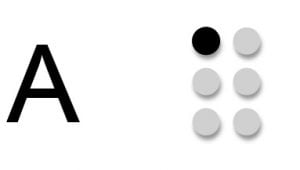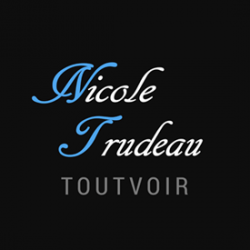Technological tools do not yet solve problems of the tactile adaptation of images. In the current research, the ultimate objective is the normalization of tactile graphics. The project is at the visual image analysis phase: elaboration and development of a methodological tool.
***
Technological Tools and Challenges in the Tactile Adaptation of Images
Abstract
Technological tools do not yet solve problems of the tactile adaptation of images. More and more individuals, organisations and businesses are interested in tactile material to allow blind and visually impaired people to have increased access to information, communication and learning. These tools should enable the producers and their collaborators to work with two types of documents: – documents specifically designed for tactile exploration; – documents specifically designed for visual reading but adapted to allow tactile exploration. It is the latter type of documents, those designed for visual reading but adapted to allow tactile exploration, which will be the subject of my presentation. In the current research, the ultimate objective is the normalization of tactile graphics. The project is at the visual image analysis phase, the phase preceding production. The resulting methodology should be an instrument of reference for understanding the visual structure of a work and should influence some choices for the production of tactile material.
Project overview
Tactile graphics normalization is the ultimate objective of my research. This objective has, in a way, been dictated by the needs of the field of education¹ and the transcribing services.
Tactile representation of images and the normalization of the means to produce it have numerous underlying problems. The paths to explore in order to understand and propose coherent, applicable, efficient and meaningful norms are numerous and complex.
The pitfalls to avoid
The confusion between Braille and tactile representation of images is one such pitfall to avoid. Alphabetic, digital and musical conventions of Braille have embraced, in meaning only, conventions already established in visual practices:
have exactly the same meaning but the signs are totally unrelated.
The Braille alphabet and the visual alphabet differ only by the sign. Braille is a closed system inside which choices are limited; dimensions are essentially constant, etc. The visual alphabet allows more flexibility but it remains a system inside which sign and meaning are inseparable.
However, the world of visual images does not follow such structured conventions. The possibilities and choices for representation are almost unlimited. If we add to these realities the perceptual characteristics of vision and touch, characteristics that cannot be ignored, we find a world where everything is still to be discovered, understood and done.
Technological resources
Technological tools developed to date, as well as the diverse methods of production², do not solve the particular problems for the tactile adaptation of visual images in a format decipherable by touch and intelligible for the blind reader.
Undeniably, the need for production tools is the first step to overcome in order to produce images, decipherable by touch, on a sufficiently large scale in the educational context, among others. Therefore, in the framework of this research project on the normalisation of tactile graphics, it is the first aspect to have been studied and that has led to the development of a tool, GRAPHTACT³.
The specific field studied
Preoccupied by the multidimensional problems of tactile graphics, its normalization and its production, as well as the urgency of the needs and expectations of transcribers, students and teachers, it gradually seemed essential, and it remains so, to work on the field of tactile graphics itself, or in other words, the visual image to communicate. Once the tools are available, tools that will continue to evolve; the final required product needs a specific approach and a methodological means to attain it.
Two types of graphics documents for tactile use exist, those conceived specifically for tactile reading and those specifically conceived for visual reading to which the visually impaired must have access. An example of the latter document type is the school textbook. It is on this type of document, in which teaching by images is a fundamental concept, that I am currently working.
Methodological tools in development
Any adaptation requires enlightened choices and decisions. Any enlightened choice requires an understanding of the work to be considered. Any understanding of the work to adapt, its structure, the nature and organisation of its content (pedagogical in this case since the project deals with schoolbooks) 4, its objects and goals, requires analysis. All systematic analysis of a work requires methodological instruments.
The concept, design and development of tools for the analysis of graphics content, as well as their validation are the framework of the work in progress at the present phase of the research: the analysis of visual images in school books approved by the Ministère de l’Éducation du Québec and used in primary and secondary schools.
The hypothesis
The visual analysis of the graphic component of a work is a necessary step toward the production of its tactile counterpart. The latter must be decipherable, that is to say respectful of the potential for touch, intelligible and significant for the visually impaired.
From this structured and rigorous analysis should emerge directions to follow and pertinent information that will determine the decisions to take to produce a tactile version which is coherent, adequate and of rich quality.
The methodological tool
The methodological tool, currently in process of validation and development, is composed of analytical worksheets. There are three of them. Blank, in other words uncompleted and therefore unidentified, they are designated: model worksheets. The first of these analytical model worksheets is used as a guide to identify, articulate and schematize the graphical content of the book studied. It is the analytical worksheet of the book. The second model worksheet is used as a guide to the description of the content and the organisation of each of the pages of the book. It is the analytical worksheet of the page. The third analytical model worksheet is used as a guide to the detailed description of each of the images contained in the book. It is the analytical worksheet of the image.
The methodological tool for the analysis of the graphical content is composed therefore of three worksheets called model worksheets. Once completed with the information collected in the data analysis of the graphical content, they form the visual data worksheets. The final result of the analysis of one book produces many visual data worksheets: a worksheet of the book, worksheets for each page and worksheets for each image.
Large amounts of specific information on the quantity, nature, significance and pertinence of the graphical material were identified. But, the methodological tool would not be complete without the final step of data compilation. This step produces the synthesis worksheets. They reveal the main trends and graphical realities of a work.
The benefits
Equipped with an overview of the book, its pages and its images, a view defined by worksheets and schematized by the synthesis worksheets, the users in the educational milieu and members of the transcribing teams have at their disposal a collection of data which will enable them to take enlightened and thoughtful decisions before beginning work on any transcription. One would therefore believe that this research would contribute to productions which are better planned, more coherent and more structured for the blind reader. These productions would bring him in contact with decipherable material, valuable and rich with meaning. The tactile image will then contribute to the representation and understanding of reality and at the same time enrich the universe of the reader with mental imagery.
It is also reasonable to believe that a complementary methodological tool will appear from this vast field of exploration; a possible scale of appreciation for the increasing or decreasing importance of the elements and the categories of the elements observed. The synthesis worksheets should be a useful tool to handle this perspective.
Conclusion
Towards normalization
The methodological tool, consisting of analytical worksheets designed to better discover, learn and understand the nature and the organisation of the actual graphical material specially for the pedagogical publications, will not generate automatic code of norms for image processing at the time of their transfer to tactile mode. But as a consequence of an increased awareness of the graphical realities used, the methodological tool is likely to reveal the need for norms, to allow the discovery of their objectives and functions, rendering some obvious and to create new ones. As a consequence, the analysis worksheets, in their totality, introduce the visual image as a central issue of tactile graphics, and provide a tangible path towards an emerging normalization, the desired objective.
Nicole Trudeau, Ph.D.
Université du Québec à Montréal
—-
Notes :
1 Ministère de l’Éducation du Gouvernement du Québec
2 Edman, Polly K., / Tactile Graphics / American Foundation for the Blind,
New York, ©1992, 527 pages.
3 Trudeau, Nicole Ph.D.
– De l’imprimante braille à Graphtact, in Les nouvelles technologies dans l’éducation des handicapés visuels, colloque organisé par INSERM, ANPEA et CNEFEI, Paris / Suresnes, 10-11 juin 1996.
– Vers la normalisation du graphisme tactile, in Réadaptation, no 396, January 1993, pp. 30-32.
– Tactile Graphics in Braille Texts, in World Congress on Technology Conference proceedings, December 1-5, 1991, Arlington Virginia pp. 382-400.
4 Champagne, Gilles, Carolle Dubois / Tandem 1. Manuel de l’élève / Les publications Graphicor, 1991. (Tandem is the title of a collection of didactic textbooks used for teaching of mathematics at the four first levels of primary school).
ROBY, Jean et PARADIS, Christiane / Enjeux et Découvertes, Tome 1 et Tome 2, (manuel de l’élève) / Éditions HRW – Groupe Éducalivres inc., 1995. (This History textbook is designed for students at the second year secondary level).
—-
Article publié dans :
Assistive Technology – Shaping the Future / AAATE’03 / Amsterdam: IOS Press, ©2003, pp. 486-489 / (Assitive Technology Research Series, volume 11) / Trudeau, Nicole, Ph.D. / Technological Tools and Challenges in the Tactile Adaptation of Images
Texte de la communication présentée dans le cadre de:
7th European Conference for the Advancement of Assitive Technology in Europe (AAATE) / Shaping the Future / Dublin (Irlande), August 30th to September 5th, 2003.
—-
Sur des sujets apparentés :
Les outils technologiques et les défis de l’adaptation tactile des images
Analyse de l’image visuelle, étape incontournable avant son adaptation tactile
